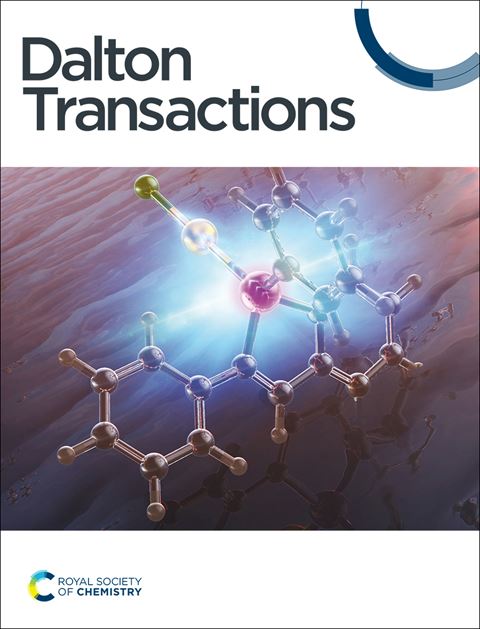与不定式水的二钍氧配合物的反应性。
IF 3.5
3区 化学
Q2 CHEMISTRY, INORGANIC & NUCLEAR
引用次数: 0
摘要
用两种等价物[K(C5Me5)]处理[ThCl4(DME)2]时,外来水的存在导致标题桥接氧配合物[{(C5Me5)2ThCl}2(μ-O)]的形成(1)。这种配合物也可以由[(C5Me5)2ThCl2]与一等量的脱气水反应形成。用Me3SiCl和AlCl3探测氧配合物的反应性,定量生成[(C5Me5)2ThCl2]。用两种等效的MeMgCl处理[{(C5Me5)2ThCl}2(μ-O)]得到[{(C5Me5)2ThMe}2(μ-O)](2),再用PhN(H)N(H)Ph处理,得到[{(C5Me5)2Th(PhNN(H)Ph)}2(μ-O)](3)。每个配合物都用光谱和结构方法进行了表征。本文章由计算机程序翻译,如有差异,请以英文原文为准。
Reactivity of a dithorium oxo complex from adventitious water†
The presence of adventitious water in the treatment of [ThCl4(DME)2] with two equivalents of [K(C5Me5)] results in the formation of the title bridging oxo complex, [{(C5Me5)2ThCl}2(μ-O)] (1). This complex can also be formed from the reaction of [(C5Me5)2ThCl2] with one equivalent of degassed water. The reactivity of the oxo complex was probed with Me3SiCl and AlCl3, resulting in the quantitative formation of [(C5Me5)2ThCl2]. Treatment of [{(C5Me5)2ThCl}2(μ-O)] with two equivalents of MeMgCl leads to [{(C5Me5)2ThMe}2(μ-O)] (2) which can be further treated with PhN(H)N(H)Ph, yielding [{(C5Me5)2Th(PhNN(H)Ph)}2(μ-O)] (3). Each complex has been characterized by spectroscopic and structural methods.
求助全文
通过发布文献求助,成功后即可免费获取论文全文。
去求助
来源期刊

Dalton Transactions
化学-无机化学与核化学
CiteScore
6.60
自引率
7.50%
发文量
1832
审稿时长
1.5 months
期刊介绍:
Dalton Transactions is a journal for all areas of inorganic chemistry, which encompasses the organometallic, bioinorganic and materials chemistry of the elements, with applications including synthesis, catalysis, energy conversion/storage, electrical devices and medicine. Dalton Transactions welcomes high-quality, original submissions in all of these areas and more, where the advancement of knowledge in inorganic chemistry is significant.
 求助内容:
求助内容: 应助结果提醒方式:
应助结果提醒方式:


